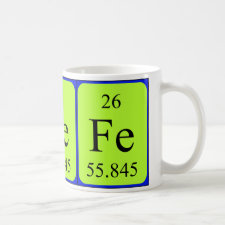
Authors: Chen ZL, Liu XJ, Huang CX, Li JL, Shen XT
Article Title: Artificial Cytochrome c Mimics: Graphene Oxide-Fe(III) Complex-Coated Molecularly Imprinted Colloidosomes for Selective Photoreduction of Highly Toxic Pollutants.
Publication date: 2020
Journal: ACS Applied Materials & Interfaces
Volume: 12
Issue: (5)
Page numbers: 6615-6626.
DOI: 10.1021/acsami.9b19186
Abstract: Our previous works showed that the molecularly imprinted TiO2 photocatalyst has been one of the most efficient materials for selective photooxidation of highly toxic organic pollutants (HTOPs) from complicated wastewater. However, some highly toxic pollutants (e.g., heavy metals) are very stable under the oxidizing environment. Therefore, the design of enzyme-like catalysts to selectively reduce highly toxic pollutants is extremely needed. In this work, inspired by the bioreduction ability of cytochrome c (cyt c, a heme containing metalloprotein), we presented a simple and efficient way to generate an artificial cyt c mimic (ACM) using graphene oxide (GO)-Fe(III) complex-coated molecularly imprinted colloidosomes. Prior to loading of Fe(III) centers to GO for constructing ACMs, GO-coated molecularly imprinted colloidosomes were synthesized via Pickering emulsion polymerization. Similar to a nature cyt c, the ACM contained both the molecular recognition element (molecularly imprinted cavity) and the non-heme electron sink (GO-Fe(III) complex), which resulted in the ACMs having good selectivity toward the enzyme-like reduction of the highly toxic target Cr(VI). Moreover, by using HepG2 cells as model cells, the Cr(VI) solution after treating by ACMs was proved to be safe and nontoxic. To confirm that the present method was universal for constructing ACMs, various GO-Fe(III) complex-coated molecularly imprinted colloidosomes, which could selectively photoreduce other highly toxic inorganic ions and organic pollutants, were also investigated. The ACMs described herein will act as a vector that encourages the design of more functional non-heme enzymes in sensing, environmental separation, clinical diagnose, and delivery of therapeutic agents
Template and target information: chromium ion, Cr(VI)
Author keywords: cytochrome c mimics, non-heme enzyme, photocatalytic reduction, graphene oxideGêÆFe(III) complex, Molecularly imprinted polymers, Pickering emulsion



Join the Society for Molecular Imprinting

New items RSS feed
Sign-up for e-mail updates:
Choose between receiving an occasional newsletter or more frequent e-mail alerts.
Click here to go to the sign-up page.
Is your name elemental or peptidic? Enter your name and find out by clicking either of the buttons below!
Other products you may like:
 MIPdatabase
MIPdatabase









